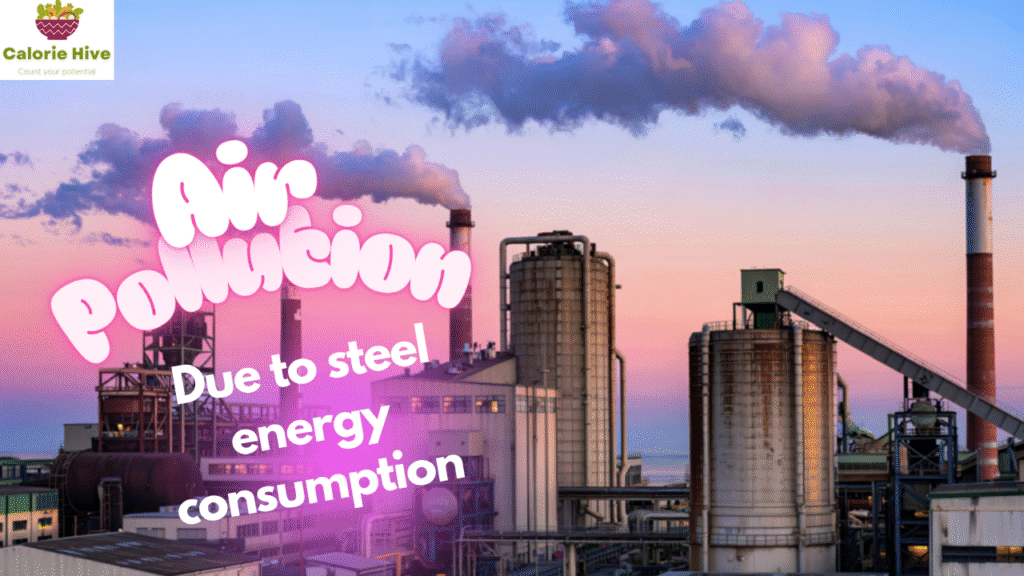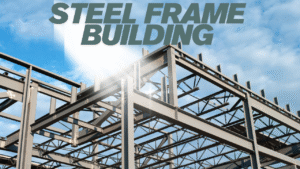When it comes to nutrition, you’ve probably heard a lot about calories. We often think of calories in terms of food and drink, but what about the calories in steel? If you are confused about the idea of reading this article, you may wonder how both of them relate; this topic will help you dispel certain myths about calorie content in various materials.
The phrase “calories in steel” might sound like a paradox at first glance. Calories are typically associated with food and energy for the human body, while steel is a robust, inanimate alloy used in construction, manufacturing, and countless industrial applications.
However, the concept of “calories in steel” can be explored metaphorically or in specific scientific and industrial contexts, such as the energy required to produce, process, or recycle steel.
This article explores the fascinating intersection of energy, steel production, and its broader implications, providing a comprehensive examination of what “calories in steel” could mean and why it matters.
What Are Calories, and How Do They Relate to Steel?
When we talk about calories in food, we’re really talking about the energy it provides.  It’s the amount of energy needed to raise the temperature of one gram of water by one degree Celsius. In scientific terms, one calorie is about 4.184 joules. But when we shift our focus to steel, ‘calories’ take on a different meaning. Here, they’re not about the energy we get from food, but the energy inputs needed for the production, processing, and recycling of this metal.
It’s the amount of energy needed to raise the temperature of one gram of water by one degree Celsius. In scientific terms, one calorie is about 4.184 joules. But when we shift our focus to steel, ‘calories’ take on a different meaning. Here, they’re not about the energy we get from food, but the energy inputs needed for the production, processing, and recycling of this metal.
Steel, an alloy primarily made of iron and carbon, often with other elements like chromium, nickel, or manganese added for enhanced properties, is not just a product but a result of a complex, energy-intensive process.
This process, which involves significant amounts of heat, electricity, and mechanical work, can be thought of as the transformation of raw materials, such as iron ore and coal, into the finished product.
In scientific discussions, we often use units like joules, watt-hours, or even calories to quantify this energy, although the industry typically measures energy in larger units, like megajoules (MJ) or gigajoules (GJ).
Energy in Steel Production
Steel production, a complex process, unfolds in several stages, each with its own significant energy demands. These stages are not just steps in a process, but crucial junctures that determine the energy footprint of the final product.
-
Mining and Raw Material Extraction
Iron ore, coal, and limestone are the primary raw materials used in the production of steel. Extracting these materials involves the use of heavy machinery, transportation, and sometimes explosives. For example, mining iron ore involves crushing and grinding the rock, which requires significant amounts of energy. According to industry estimates, the energy needed for mining and beneficiation can range from 0.5 to 1.5 MJ per kilogram of iron ore.
-
Ironmaking
The most energy-intensive step in steel production is the conversion of iron ore into molten iron, typically in a blast furnace. The sheer magnitude of this process is staggering, as a single blast furnace can consume approximately 13-15 MJ of energy per kilogram of pig iron produced. In caloric terms, this equates to approximately 3,100-3,600 kilocalories per kilogram, a staggering amount compared to food energy.
-
Steelmaking
Once iron is produced, it’s refined into steel using either a basic oxygen furnace (BOF) or an electric arc furnace (EAF). The energy cost for BOF steelmaking is around 4-6 MJ/kg, a significant amount. However, EAF steelmaking, which primarily uses scrap steel, is a beacon of energy efficiency, requiring only 1.5-2.5 MJ/kg. This stark contrast highlights the potential for energy efficiency in the steel industry.
-
Forming and Finishing
After steel is produced, it’s shaped into products like beams, sheets, or wires through processes such as rolling, forging, or casting. These processes require additional energy for heating, mechanical work, and transportation. For example, hot rolling steel can consume 1-2 MJ/kg, depending on the thickness and type of steel.
When we add up these stages, the total energy cost of producing one kilogram of steel ranges from 20 to 30 MJ, or roughly 4,800 to 7,200 kilocalories. To put this in perspective, that’s equivalent to the energy content of about 1-1.5 kilograms of sugar!
This energy intensity highlights why steel production is a key focus for discussions on industrial efficiency and sustainability. For comparison, the energy cost of producing one kilogram of steel is significantly higher than that of other materials, such as aluminum or plastic.
This underscores the importance of finding ways to reduce energy consumption in steel production. Calories, in their most common usage, measure the energy content of food, specifically the amount of energy required to raise the temperature of one gram of water by one degree Celsius.
In scientific terms, one calorie is approximately equal to 4.184 joules. However, in the context of steel, calories don’t refer to dietary energy but rather to the energy inputs required during the production, processing, and recycling of this metal.
Steel is an alloy primarily composed of iron and carbon, often with other elements such as chromium, nickel, or manganese added to enhance its properties. Producing steel is an energy-intensive process that requires significant amounts of heat, electricity, and mechanical work. The “calories” in steel can thus be thought of as the energy consumed in transforming raw materials, such as iron ore and coal, into the finished product.
This finished product can take the form of a wide range of items, from structural beams used in construction to thin sheets used in automotive manufacturing. To quantify this, we often use units such as joules, watt-hours, or even calories in scientific discussions, although the industry typically measures energy in larger units, like megajoules (MJ) or gigajoules (GJ).
Environmental Impact of Steel’s Energy Consumption
The massive energy requirements of steel production have significant environmental implications. Most steel is produced using fossil fuels, particularly coal in blast furnaces, which contributes to greenhouse gas emissions.
On average, producing one ton of steel via the BOF route generates about 1.8-2.2 tons of carbon dioxide (CO2). The EAF route, which relies on electricity and scrap steel, is less carbon-intensive, producing around 0.4-0.7 tons of CO2 per ton of steel, depending on the electricity source.
The environmental “caloric” cost of steel doesn’t stop at CO2. Other impacts include:
-
Air Pollution: Blast furnaces emit particulate matter, sulfur dioxide, and nitrogen oxides, which can harm air quality and human health.
-
Water Usage: Steel production requires water for cooling and processing, which can strain local water resources.
-
Land Use: Mining for iron ore and coal disrupts ecosystems and can lead to deforestation or habitat loss.
Given these impacts, the steel industry is under increasing pressure to reduce its energy footprint and adopt sustainable practices.
The first thing that seems critical to mention is that steel is not caloric in the same way that bread is caloric. Why? Since calories are a measure of energy that comes from organic matters, associated with items such as carbohydrates, fats, and even proteins. It is an inorganic material used in steel, and that means the body can neither get its nutrition nor energy from the material.
Steel in Energy-Efficient Technologies
While steel production is energy-intensive, steel itself plays a critical role in energy-efficient technologies, effectively “paying back” some of its caloric cost. Here are a few examples:
- Renewable Energy Infrastructure
Steel is a cornerstone of wind turbines, solar panel frames, and hydroelectric dams. For instance, a single wind turbine requires hundreds of tons of steel for its tower, nacelle, and foundation. By enabling clean energy production, steel helps reduce global reliance on fossil fuels, offsetting its environmental impact over time.
- Lightweight Steels for Transportation
Advanced high-strength steels (AHSS) are utilized in the automotive and aerospace industries to produce lighter, more fuel-efficient vehicles. By reducing vehicle weight, AHSS lowers fuel consumption and emissions. For example, replacing traditional steel with AHSS in a car can reduce its weight by 10-20%, leading to significant energy savings over the vehicle’s lifetime.
- Energy-Efficient Buildings
Steel is widely used in construction for its strength and versatility. Modern steel-framed buildings are designed to be energy-efficient, featuring improved insulation and enhanced structural integrity. Additionally, steel’s recyclability means that buildings can be deconstructed and their materials reused, reducing the need for new steel production.
are designed to be energy-efficient, featuring improved insulation and enhanced structural integrity. Additionally, steel’s recyclability means that buildings can be deconstructed and their materials reused, reducing the need for new steel production.
In this sense, the “calories” invested in steel production contribute to long-term energy savings in other sectors, creating a complex but valuable trade-off.
Innovations in Reducing Steel’s Energy Footprint
The steel industry is actively working to reduce its energy consumption and environmental impact. Several innovations are reshaping how steel is made, effectively lowering the “calories” required:
- Hydrogen-Based Steelmaking
One of the most promising developments is the use of hydrogen as a reducing agent in place of coke. Hydrogen-based direct reduced iron (DRI) processes produce water vapor instead of CO2, drastically reducing emissions. Companies like SSAB in Sweden are pioneering this technology, with pilot projects demonstrating reductions of up to 90% in CO2 emissions.
- Electrification and Renewable Energy
Electric arc furnace-produced iron (DRI) processes produce water vapor instead of CO2, drastically reducing emissions. Companies like SSAB in Sweden are pioneering this technology, with pilot projects demonstrating reductions of up to 90% in CO2 emissions.
- Electrification and Renewable Energy
Electric arc furnaces powered by renewable energy sources, such as wind or solar, can significantly reduce the carbon footprint of steelmaking. For example, using green electricity in EAFs can reduce emissions to near zero, depending on the grid’s energy mix.
- Carbon Capture and Storage (CCS)
CCS technologies capture CO2 emissions from blast furnaces and store them underground. While still in early stages, CCS could reduce emissions from traditional steelmaking. Energy sources such as wind or solar can significantly reduce the carbon footprint of steelmaking. For example, using green electricity in EAFs can reduce emissions to near zero, depending on the grid’s energy mix.
- Carbon Capture and Storage (CCS)
CCS technologies capture CO2 emissions from blast furnaces and store them underground. While still in early stages, CCS could reduce emissions from traditional steelmaking by 550-880%.
- Recycling and Circular Economy
Steel is one of the most recyclable materials on Earth, with nearly 90% of steel products being recycled globally. Recycling steel via EAFs requires.
- Recycling and Circular Economy
Steel is one of the most recyclable materials on Earth, with nearly 90% of steel products being recycled globally. Recycling steel via EAFs requires far less energy than primary production—about 60-70% less. By prioritizing scrap steel, the industry can reduce its reliance on virgin materials and lower its energy consumption by approximately 60-70%. By prioritizing scrap steel, the industry can reduce its reliance on virgin materials and lower its energy demands.
- Process Optimization
Advances in automation, artificial intelligence, and process control are improving efficiency in steel plants. For example, smart sensors can optimize furnace temperatures, reducing energy waste. Some plants have reported energy savings of 10-15% through the use of these technologies.
These innovations highlight the industry’s commitment to sustainability, ensuring that the “calories” in steel are used more efficiently and responsibly.
So, what what’s the takeaway here? It is impossible to literally ”take in” the calories you find in steel; nevertheless, the knowledge of the nature of steel will go a long way in explaining why this material is precious in most industries. It ranges from construction and infrastructure, where the factors of steel, such as strength and stiffness, are critical to the manufacturing of vehicles.
The Human Element: Steel and Society
Beyond the technical and environmental aspects, the concept of “calories in steel” also has social implications. Steel production supports millions of jobs worldwide, from miners to engineers to factory workers. The energy invested in steel translates into economic activity, infrastructure development, and technological progress. However, the industry must strike a balance between these benefits and its environmental responsibilities.
For consumers, understanding the energy cost of steel can inform better choices. For example, supporting companies that use recycled steel or low-carbon production methods can drive demand for sustainable practices. Similarly, policymakers play a crucial role in setting regulations and incentives to encourage greener steel production.
You may be wondering how steel helps/interferes with our diets indirectly. It may not directly present calories itself, but steel is used in the manufacture of many of the utensils and appliances we employ in food preparation.
For example, stainless steel pots and pans are used in our everyday use in cooking because this is what we want: to prepare better meals for our families free from dangerous chemicals that might infuse into the meals we prepare for consumption.
Thus, it is important to go forward and know what material science can bring that will improve the ideas towards how a material such as steel can be applied as a food technology. For instance, experts are currently looking for more improved techniques on how to preserve food by employing the use of steel and or other materials.
The application of energy is shown in the steelmaking process at different levels. In the case of steel, energy consumed in making it could mean the calories in steel. Iron carbon alloy, called steel, is manufactured by different methods, many of which are the blast furnace and the electric arc furnace. Both of these processes are energy-intensive.
Conclusion: The Bottom Line
The idea of “calories in steel” may initially seem abstract, but it encapsulates the immense energy required to produce one of the world’s most essential materials.
From mining to manufacturing, steel’s energy footprint is significant, with each kilogram carrying the equivalent of thousands of kilocalories. Yet, steel’s role in enabling energy-efficient technologies, coupled with innovations like hydrogen-based steelmaking and recycling, shows that the industry is evolving toward a more sustainable future.
By understanding the energy demands of steel production, we can better appreciate its environmental and societal impacts. Whether you’re an engineer, a policymaker, or simply a curious reader, recognizing the “calories” in steel highlights the intricate balance between industrial progress and environmental stewardship.
As the industry continues to innovate, the caloric cost of steel will likely decrease, paving the way for a greener, more efficient world.
You can also visit:What are Calories? Learn more in Detail




